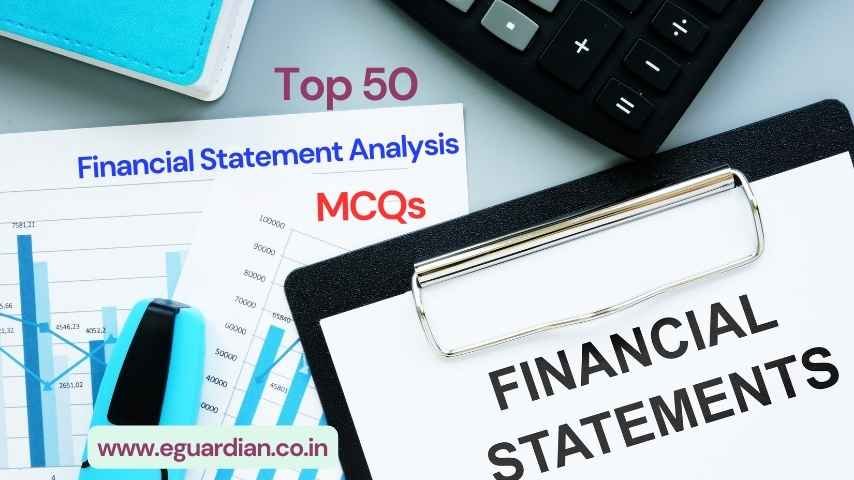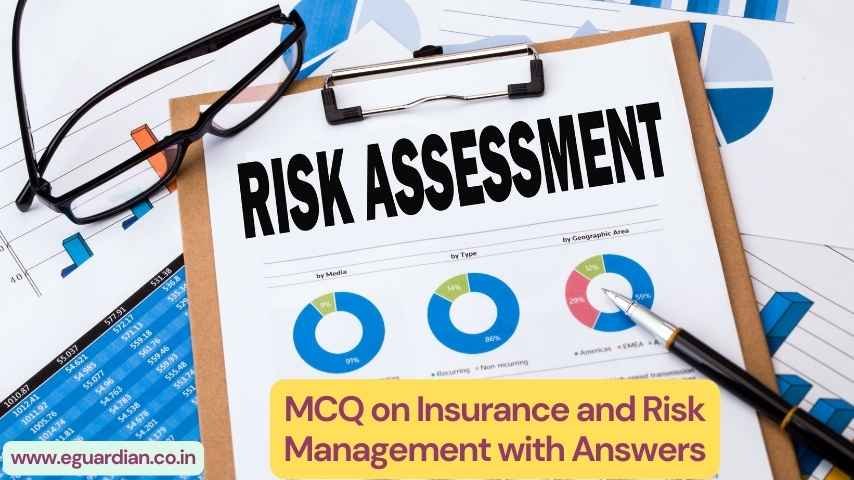Attention all students! Are you feeling the pressure of upcoming exams? Are you searching high and low for Financial Management MCQs (Multiple Choice Questions) with accurate answers to ace your MBA or BBA tests? Well, consider your search over because you have landed in the right place!

Top 75 Financial Management MCQs with Answers
1. ___ is measured by the variability of expected returns of the project
Ans. stand-alone risk.
2. Market risk is measured by the effect of the project on the ___ of the firm
Ans. Beta
3. Firms cannot ___ market risk in the normal course of business
Ans. Diversify
4. The impact of the U.S. subprime crisis on certain segments of the Indian economy is an example of ___
Ans. International risk
5. A risk premium is the ___ that the investors require as compensation for the assumption of additional risks of the project.
Ans. Additional return
6. RADR is the sum of ___ and ___.
Ans. The risk-free rate, the risk premium
7. The higher the risk, ___ the premium.
Ans. Greater
8. CE coefficient is ___.
Ans. Risk: an adjustment factor
9. The discount factor to be used under the CE approach is ___.
Ans. The risk-free rate of interest
10. Because of high ___ CE clears only good projects.
Ans. Conservation
11. ___ is considered to be superior to RADR.
Ans. CE
12. ___ analyse the changes in the project NPV on account of a given change in one of the input variables of the project
Ans. Sensitivity analysis
13. Examining and defining the mathematical relation between the variable of the NPV is ___
Ans. One of the steps of sensitivity analysis
14. Forecasts under sensitivity analysis are made under ___
Ans. Different economic conditions
15. The probability distribution approach incorporates the probability of occurrences in various economic environments to make the NPV ___.
Ans. More reliable
16. ___ is the likelihood of the occurrence of a particular economic environment.
Ans. Probability
17. A decision tree can handle the ___ of complex investment proposals
Ans. Sequential decisions
18. ___ portrays inter-related, sequential and critical multi-dimensional elements of major project decisions
Ans. Decision tree
19. Adequate attention is given to the ___ in an investment decision under the decision-tree approach
Ans. Critical aspects
20. ___ are effectively handled by the decision-tree approach
Ans. Complex projects
21. ___ and revenue generation are the two important categories of capital budgeting.
Ans. Cost reduction
22. ___ examines the project from a social point of view.
Ans. Economic appraisal
23. All technical aspects of the implementation of the project are considered in ___
Ans. Technical appraisal
24. ___ of a project is examined by financial appraisal.
Ans. Financial viability
25. Among the elements that are to be examined under commercial appraisal, the most crucial one is the ___.
Ans. demand for the product or service.
26. ___ is the third step in the evaluation of the investment proposal.
Ans. Decision criteria
27. A ___ is not a relevant cost for the project decision.
Ans. Sunk cost
28. The effect of a project on the working of other parts of a firm is known as ___.
Ans. Externalities
29. The essence of the separation principle is the necessity to treat ___ of a project separately from that of ___.
Ans. Investment element; Financing element
30. Pay-back period ___ time value of money.
Ans. Ignores
31. IRR gives a rate of return that reflects the ___ of the project.
Ans. Profitability of
32. When a firm imposes constraints on the total size of its capital budget, it is known as ___.
Ans. Capital rationing
33. Internal capital rationing is used by a firm as a ___.
Ans. Means of financial control
34. Rigidities that affect the free flow of capital between firms cause ___.
Ans. External capital rationing
35. The inability of a firm to satisfy the regularity norms for the issue of equity shares for tapping the market for funds causes ___.
Ans. External capital rationing
36. The various internal constraints for capital rationing are ___, ___, ___, ___ and ___.
Ans. The privately-owned company, Divisional constraints, Human resource limitations, Dilution and Debt constraints
37. Lack of ___ will become a huge failure and also an essential effect of internal constraint.
Ans. Lack of manpower
38. The reasons for capital rationing are ___ and ___.
Ans. External constraints and internal constraints imposed by the management
39. The two steps involved in capital rationing are ___ and ___.
Ans. Ranking the project, selection of the most profitable investment proposal
40. Project indivisibility can lead to sub-optimal result when ___ is used for capital rationing.
Ans. Profitability index
41. Objective function under the linear programming approach is ___.
Ans. Maximisation of the sum of NPVs of the projects
42. When the project is not divisible ___ can be employed to avoid the changes in accepting a fraction of a project.
Ans. Integer programming
43. The programming techniques of capital rationing are ___ and ___.
Ans. Linear programming and integer programming
44. The selection is done mainly in the view that which investment proposal earns ___than compared to the other proposals.
Ans. More profits
45. The proposal should have the potentiality of making large ___.
Ans. Anticipated profits
46. Maintaining adequate working capital at a satisfactory level is very crucial for the ___ and ___ of a firm.
Ans. Maintaining, Competitiveness.
47. Pre-paid expenses are ___.
Ans. Current assets.
48. Provision for tax is___.
Ans. Current Liabilities
49. A firm must have ___ neither excess nor shortage.
Ans. Adequate working capital
50. List any two components of current assets.
Ans. Inventories
51. List any two components of current liabilities.
Ans. Sundry debtors
52. ___ refers to the amounts invested in current assets.
Ans. Gross working capital
53. To ___ and monitor the utilisation of funds of a firm ___ is to be given top priority.
Ans. Plan, working capital management as applied.
54. When current assets exceed current liabilities the net working capital is ___.
Ans. Positive
55. Permanent working is called ___ working capital.
Ans. Fixed
56. Objective of working capital management is to achieve a trade-off between ___ and___.
Ans. Liquidity, Profitability.
57. Credit obtained by a firm from its suppliers is known as ___.
Ans. Spontaneous finance.
58. An aggressive policy of working capital management means depending on ___ to the maximum extent.
Ans. Spontaneous finance.
59. To prevent the competitors from snatching any market for their products the firm may have ___ a policy of holding ___ of current assets.
Ans. Conservative, Large quantum.
60. To finance the operations in ___ of firm working capital is required.
Ans. Operating cycle
61. To finance operations during the time gap between ___ and ___ time gap is required.
Ans. Sale of goods on credit, the realisation of money from customers.
62. The time gap between the acquisition of resources from suppliers and the collection of cash from customers is known as ___.
Ans. Operating cycle
63. ___ is the average length of time required to produce and sell the product.
Ans. Inventory conversion period
64. ___ is the average length of time required to convert the firms’ receivables into cash.
Ans. Receivables conversion period
65. ___ conversion cycle is the length of time between firms’ actual cash expenditure and its own receipt.
Ans. Cash Conversion cycle
66. Capital intensive industries require ___ amount of working capital.
Ans. Higher
67. There is a ___ between the volume of sales and the size of the working capital of a firm.
Ans. Positive direct correlation.
68. Under inflationary conditions the same level of inventory will require ___ investment in working capital.
Ans. Increased
69. Longer the manufacturing cycle, ___ the investment in working capital.
Ans. Larger
70. ___ is used to estimate the working capital requirements of a firm.
Ans. Operating cycle
71. Operating cycle approach is based on the assumption that production and sales occur on a ___.
Ans. Continuous bases
72. The factors involved in the estimation of the current liabilities are ___, ___ and ___.
Ans. Trade creditors, Direct wages and Overheads
73. Management of cash balances can be done by ___ and ___.
Ans. Deficit financing or investing surplus cash
74. The four motives for holding cash are ___, ___, ___ and ___.
Ans. The transaction, speculative, precautionary and compensating
75. The greater the creditworthiness of the firm in the market lesser is the need for ___ balances.
Ans. Precautionary
- Financial Management Multiple Choice Questions in pdf: Set-2
- Financial Accounting Multiple Choice Questions and Answers




This is my first time pay a quick visit at here and i am truly pleassant to read everthing
at alone place.